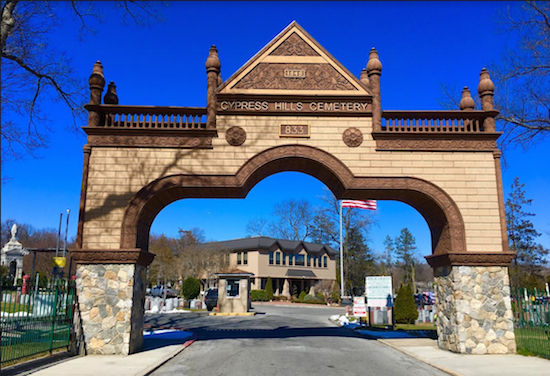Jackie Robinson, Mae West and Piet Mondrian rest in peace at Cypress Hills Cemetery
Eye On Real Estate

Jackie Robinson. Mae West. Piet Mondrian. A War of 1812 veteran who lived until 1905.
Four VIPs from very different milieus share the same eternal resting place — Cypress Hills Cemetery.
The picturesque graveyard, which was founded in 1848, occupies a 225-acre swath of terrain that stretches across both sides of the Brooklyn-Queens border.
It gets less media attention than high-profile Brooklyn boneyard Green-Wood. But Cypress Hills Cemetery is nevertheless an inspirational place to visit. Baseball fans, history buffs and Brooklynites who want to know their borough well should make the trek as soon as spring foliage arrives.
To refresh your memory if you haven’t recently visited the scenic cemetery, take the A or C train to Broadway Junction, then switch to the J train. The Cypress Hills J train station is just steps away from the cemetery’s front entrance at 833 Jamaica Ave.
By the way, the entrance has an eye-catching archway topped by a distinctive roof. It is a beautiful replica of the original entrance, which had been built in 1893.
The replica was constructed some years ago as part of a successful effort by Cypress Hills Cemetery’s management to get the historic cemetery into good shape.
